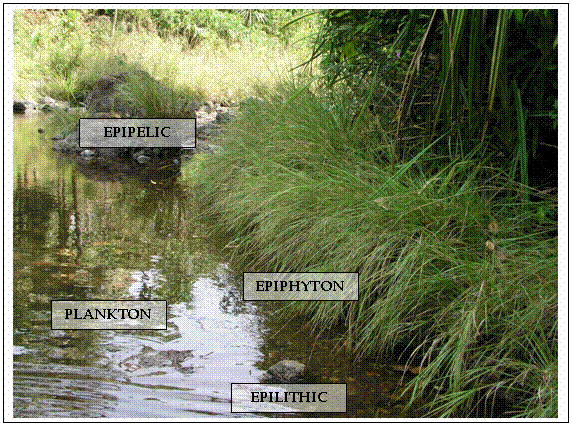
Ecology |
• Plankton and Benthos:
Diatoms can be classified into two major groups based on their biology of living as plankton and benthos (Figure 10).
PLANKTON: Diatoms that float through the upper part of the water column. The term planktonic comes from the Greek word planktos = wanderer, drifter .
BENTHOS: Diatoms that live upon substrates. Benthos are classified into different types according to the substrate to which they are attached. They are as follows.
Diatom Classification by their habitats:
Epiphytic:
The term epiphyte refers to any plant that grows upon or attached to another living plant. The term stems from Greek epi- (meaning 'upon') and phyton (meaning 'plant').
Epipsammic:
The flora attached to sand grains is fairly extensive in both freshwater and seawater. Observation under the microscope usually reveals either quite clean looking grains or grains with a film of mucilage in which bacteria and organic particles are prolific.
Epipelic:
Epipelic algae (Round, 1964) are those which live freely on and in the surface of submerged sediments. Their habitat is often fluid, disturbed by water movements and burrowing animals, devoid of light below only a mm or two below the surface, and usually anaerobic except at the surface.
Endopelic:
Alga, which grows within mud (sediment) is called as endopelic.
Epilithic:
Association of diatom occur on the surface of exposed rock on the land, especially on the rocks of flowing water, along the margin of the lake and most conspicuously forming belts of vegetation on rocks along tidal coasts.
Endolithic:
Algae living in the fissures, and spreading laterally in rocks are known as endolithic algae.
Epizoic:
Algae growing attached to animals, (e.g. animals such as molluscs, crustaceans, turtles and fishes).

Figure 10: Figure showing different habitats of diatoms in stream